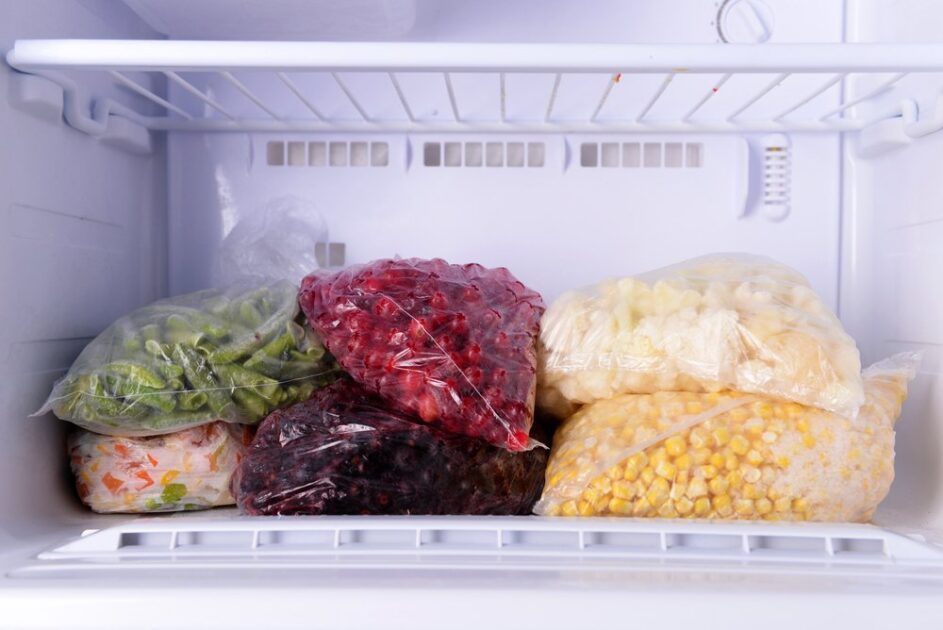Tips for getting the most out of your freezer
Freezing food is a perfect way to preserve food, reduce food waste and ensure you always have ingredients on hand.

A freezer is an extremely useful tool for meal planning. It can be kept stocked with ingredients to put together meals quickly or can be used to keep fresh food from going off.
Freezing is a great way to preserve food for a long period of time, and will help prevent a lot of food waste. If food is properly frozen it will stay safe to eat indefinitely, although after a time the taste and texture may suffer.
Not all foods are suitable for freezing however, and there are tips that can help you ensure you get the most out of your freezer.
1. Cool foods before you freeze them
Freezing food when hot will raise the temperature of the freezer and could cause other foods to start defrosting. If you want to freeze a dish you have cooked, wait for it to cool down before stowing it. You can divide the food into smaller parts to speed up the cooling process.
2. Wrap the food properly or put it in sealed containers
Wrapping food properly in sealed containers to stop your food from developing freezer burn. Freezer burn is when water escapes from the food and moves to the coldest part of the freezer – leaving your food dehydrated. The food will still be safe to eat if it gets freezer burn, but the taste and texture may be affected.
3. Freeze food in realistically sized portions
If you live alone or are only feeding yourself, freezing a portion that could feed eight people doesn’t make a lot of sense. Divide food into portions so that you will eat everything on the day it is defrosted.
4. Do not re-freeze food once it has thawed
It is generally not recommended to re-freeze food once it has thawed, so make sure to plan ahead so that you can use thawed food in time.
5. Label everything you freeze
If you don’t label foods or ingredients clearly, you might not remember what they are, let alone when you froze them. You can use tape and markers to label foods. You should use one colour market for raw food and another colour for cooked food. Always include the date that you froze the food on your label,.
6. Check the ‘use by’ date
Do not freeze any food after its ‘use by’ date, because it will not be safe to eat. ‘Use by’ dates and ‘best before’ dates are different because while ‘use by’ dates are decided based on scientific testing, ‘best before’ dates are not. ‘Use by’ dates are deadlines and ‘best before’ dates are guidelines. This can help you remember it in your head.
7. Defrost your freezer
An icy freezer is an inefficient one, so make sure you defrost your freezer if ice builds up. Don’t worry about the food; most things will remain frozen in the fridge for a couple of hours while the freezer defrosts.
8. If in doubt, throw it out
Freezing does not kill bacteria. If you are not sure how long something has been frozen or are a bit wary of something once defrosted, don’t take any chances.
9. Know what you can and can’t freeze
Not all foods respond well to freezing. Avoid freezing things like mayonnaise, yoghurt, sour cream as they can separate. Also avoid freezing fruits and vegetables with a high water content, such as lettuce and watermelon, as they’ll become limp and soggy when thawed.
10. Know what freezes well
Foods that are great to freeze are foods like bread, soup and stew.
11. Defrosting and refreezing after cooking
This is best done in the fridge, especially if we are talking about meat. Put frozen food on a tray at the bottom of the fridge and leave overnight or during the working day. Avoid refreezing raw meat or fish that’s been defrosted and anything else that has already been frozen, unless you have cooked it again complete.
This guide has been adapted from a similar one produced by Safe Food, the the public body responsible for raising consumer awareness of issues relating to food safety and healthy eating across the island of Ireland.






